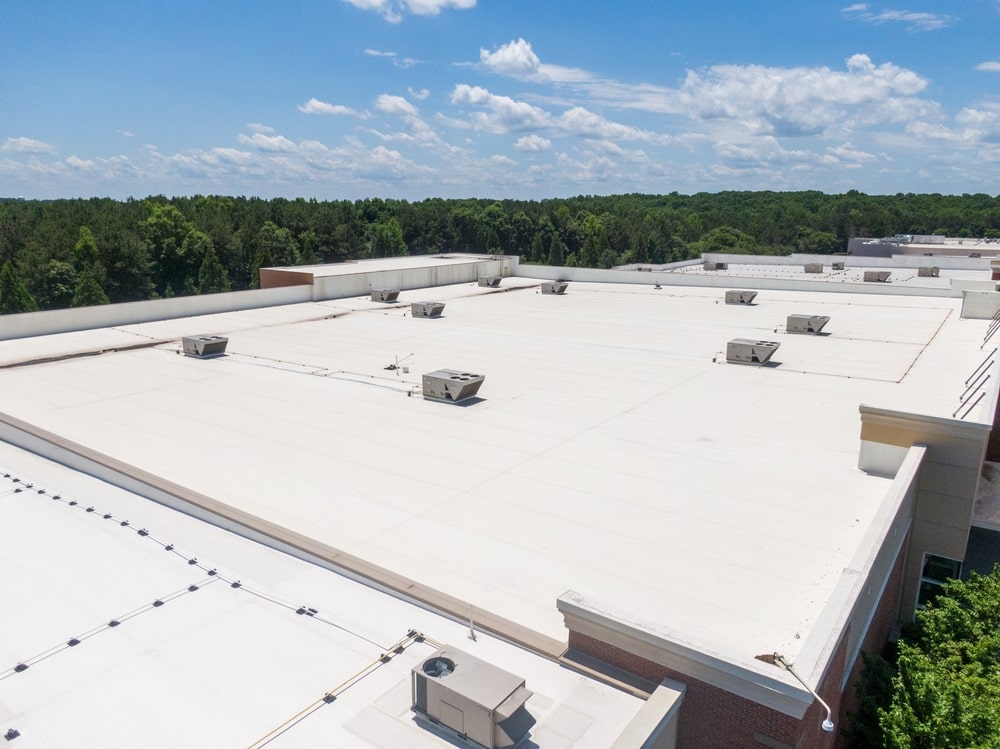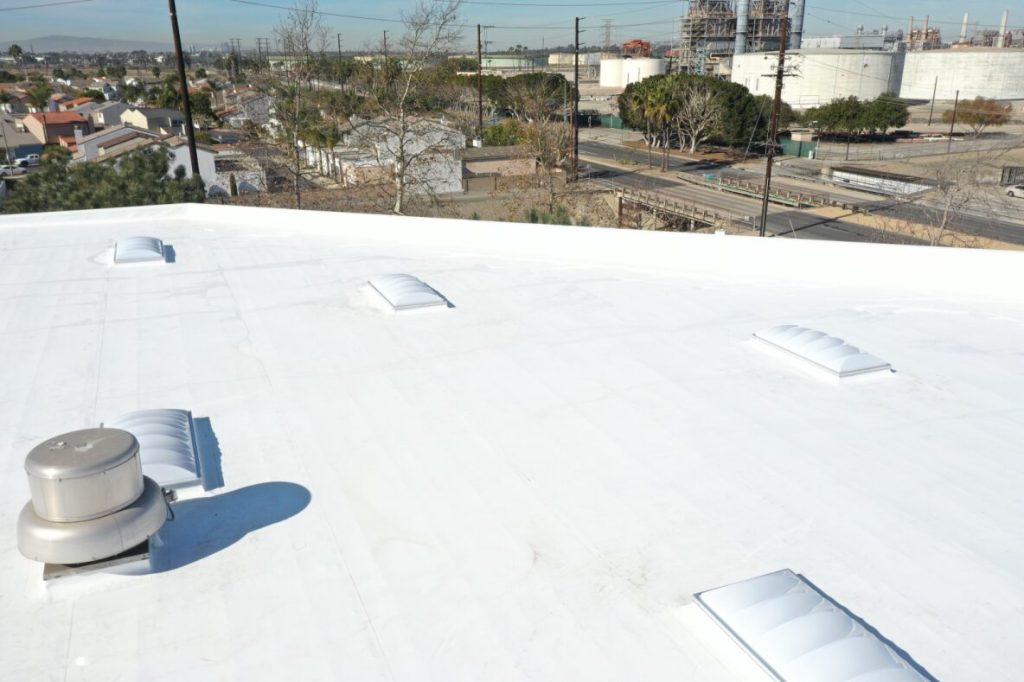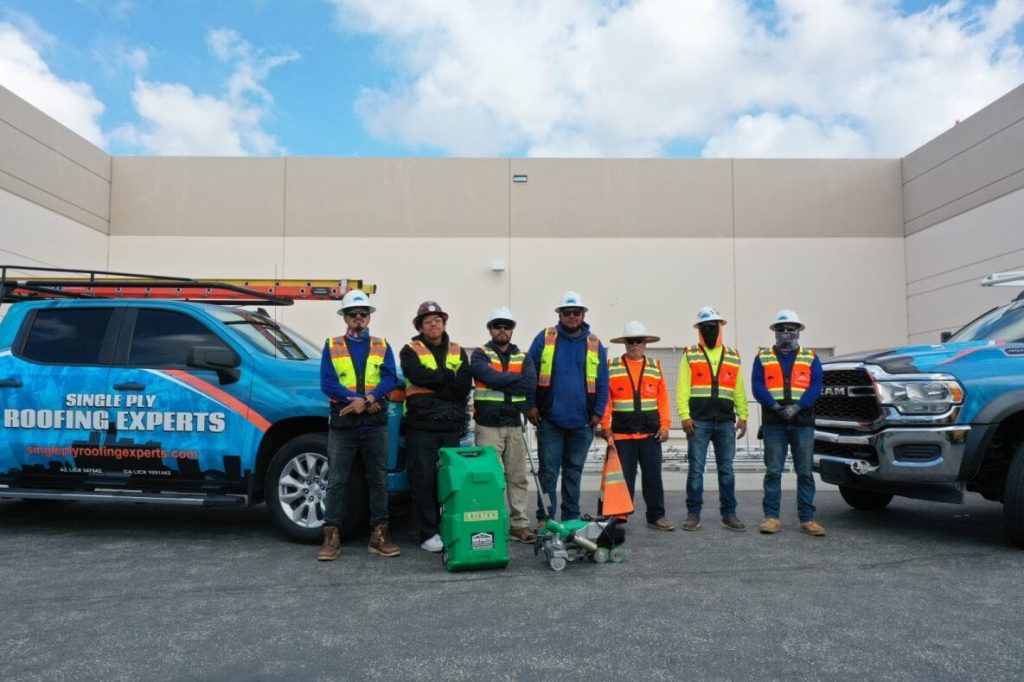When it comes to commercial roofing, selecting the right material is crucial for longevity, energy efficiency, and overall performance. Two of the most popular single-ply roofing membranes are Thermoplastic Polyolefin (TPO) and Polyvinyl Chloride (PVC). Understanding the distinctions between these materials can help property owners make informed decisions.
Understanding TPO and PVC Roofing Systems
Both TPO and PVC are thermoplastic membranes used in flat or low-slope roofing systems. They are installed in single layers and offer various benefits, but they differ in composition, performance, and cost.

What is TPO Roofing?
TPO roofing is a blend of polypropylene and ethylene-propylene rubber. It’s known for its white, reflective surface that enhances energy efficiency by reflecting UV rays. TPO membranes are typically heat-welded at the seams, creating a watertight bond. They are lightweight, flexible, and resistant to dirt, algae, and debris accumulation.
What is PVC Roofing?
PVC roofing is made from polyvinyl chloride, a durable plastic material. It includes plasticizers for flexibility and is reinforced with fiberglass or polyester. PVC membranes are also heat-welded, ensuring strong seams. They are highly resistant to chemicals, fire, and punctures, making them suitable for buildings with grease vents or exposure to harsh substances.

Key Differences Between TPO and PVC Roofing
While both systems serve similar purposes, their compositions lead to distinct characteristics.
Material Composition and Flexibility
- TPO: Offers greater flexibility, making it easier to install in various climates.
- PVC: Slightly more rigid but provides superior durability.
Energy Efficiency and UV Resistance
- TPO: Highly reflective, contributing to lower cooling costs.
- PVC: Also reflective but may retain more heat over time.
Chemical and Fire Resistance
- TPO: Less resistant to chemicals and may degrade when exposed to oils or grease.
- PVC: Excellent chemical and fire resistance, suitable for environments with such exposures.
Installation and Maintenance
- TPO: Easier and quicker to install, leading to lower labor costs.
- PVC: Requires more specialized installation but offers longer-term benefits.
Benefits of TPO Roofing
TPO roofing has gained popularity due to its balance of performance and cost-effectiveness.
Cost-Effectiveness
TPO membranes are generally more affordable than PVC, both in material and installation costs. This makes them an attractive option for large-scale projects or budget-conscious building owners.
Environmental Friendliness
TPO is 100% recyclable and free of chlorine, making it an environmentally friendly choice. Its reflective surface reduces heat absorption, contributing to lower energy consumption and mitigating the urban heat island effect.
Ease of Installation
The flexibility and lightweight nature of TPO membranes simplify the installation process. Heat-welded seams ensure a secure, watertight seal, reducing the likelihood of leaks.
Benefits of PVC Roofing
PVC roofing is renowned for its durability and resistance to various environmental factors.
Superior Durability
PVC membranes have a proven track record of longevity, often lasting over 20 years with proper maintenance. They are resistant to punctures, impacts, and harsh weather conditions, making them ideal for high-traffic roofs.
Chemical and Fire Resistance
PVC’s composition makes it highly resistant to chemicals, oils, and grease, as well as fire. This makes it suitable for restaurants, airports, and industrial facilities with exposure to such elements.
Low Maintenance Requirements
PVC roofs require minimal upkeep over their lifespan. Their resistance to mold, bacteria, and plant roots reduces the need for frequent inspections and repairs.

Cost Comparison: TPO vs. PVC Roofing
Understanding the financial implications of each roofing system is crucial for decision-making.
Initial Installation Costs
- TPO: Generally lower due to material and labor savings.
- PVC: Higher upfront costs but may offer better value over time.
Long-Term Value
- TPO: Cost-effective for short to medium-term investments.
- PVC: Greater durability may result in lower total cost of ownership.
Suitability for Different Building Types
Selecting the appropriate roofing system depends on the building’s function and environmental exposure.
Commercial Buildings
- TPO: Suitable for general commercial use with limited chemical exposure.
- PVC: Preferred for facilities like restaurants and factories with chemical emissions.
Climate Considerations
- TPO: Performs well in cooler climates due to flexibility.
- PVC: Better suited for warmer climates with high UV exposure.
PVC vs. TPO vs. EPDM: A Broader Comparison
If you’re still considering your options, let’s throw EPDM (Ethylene Propylene Diene Monomer) into the mix.
| Roofing Type | Lifespan | Energy Efficiency | Chemical Resistance |
| TPO | 15-20 yrs | Excellent | Moderate |
| PVC | 20-30 yrs | Very Good | Excellent |
| EPDM | 20-25 yrs | Poor (black surface) | Low |
PVC vs. TPO vs. EPDM choices boil down to what you need most—budget, durability, or environmental performance.
Similarities Between TPO and PVC Roofing Systems
Despite their differences in chemical makeup and performance, TPO and PVC roofing systems share several important similarities that make them both attractive choices for commercial roofing. First and foremost, both are single-ply membrane systems designed primarily for flat and low-slope roofs. This makes them lightweight and flexible, which simplifies the installation process and reduces structural load on buildings. They are both installed using heat-welded seams, which create a watertight seal far superior to adhesives or mechanical fasteners. This feature enhances their resistance to leaks and contributes to their overall durability.
Another key similarity lies in their energy efficiency. Both TPO and PVC roofing membranes are typically available in white or light-colored finishes, which reflect sunlight and help lower rooftop temperatures. This contributes significantly to reduced cooling costs in warm climates and makes both systems appealing for LEED-certified or energy-conscious projects. Additionally, they offer excellent resistance to UV rays, ozone, and general weathering, which extends the lifespan of the roof and lowers maintenance demands. With overlapping benefits in durability, ease of installation, and energy performance, it’s no surprise that the TPO vs. PVC roofing debate often comes down to the specific needs of the building rather than any fundamental performance flaw in either option.
Schedule a Consultation With a Commercial Roofing Expert
If you’re weighing your options between TPO vs. PVC roofing, the smartest next step is to speak directly with a commercial roofing professional. Scheduling a consultation allows you to receive a personalized assessment of your building’s needs, environmental conditions, and budget. A qualified roofing expert will evaluate your roof’s structure, identify potential challenges, and recommend the best material—whether it’s PVC, TPO, or even EPDM—based on decades of field experience. At SinglePlyRoofingExperts.com, we offer free consultations that help commercial property owners make confident, cost-effective decisions without the guesswork. Let’s find the perfect roofing solution for your facility—reach out today and schedule your professional evaluation.

Frequently Asked Questions (FAQs)
Which roofing system is more durable?
PVC roofing generally offers greater durability, especially in environments with chemical exposure or high temperatures.
Is TPO roofing more environmentally friendly than PVC?
TPO is often considered more eco-friendly due to its recyclability and energy efficiency.
Can both TPO and PVC roofing be installed on existing buildings?
Yes, both systems can be retrofitted onto existing structures, provided the underlying roof is in suitable condition.
How do maintenance requirements compare between TPO and PVC?
Both systems require minimal maintenance, but PVC may have an edge due to its chemical resistance and durability.
Which roofing system offers better energy efficiency?
Both TPO and PVC offer excellent energy efficiency, but TPO’s higher reflectivity may provide slightly better performance in reducing cooling costs.
Conclusion
Both TPO and PVC roofing systems offer distinct advantages tailored to different building needs and environmental conditions. TPO is cost-effective and environmentally friendly, making it suitable for general commercial applications. PVC, with its superior durability and chemical resistance, is ideal for buildings exposed to harsh substances or high temperatures. Assessing your building’s specific requirements and consulting with roofing professionals will ensure the selection of the most appropriate roofing system.
For expert advice and installation services, contact SinglePlyRoofingExperts.com. Our team is dedicated to providing tailored roofing solutions that meet your commercial property’s unique needs.

